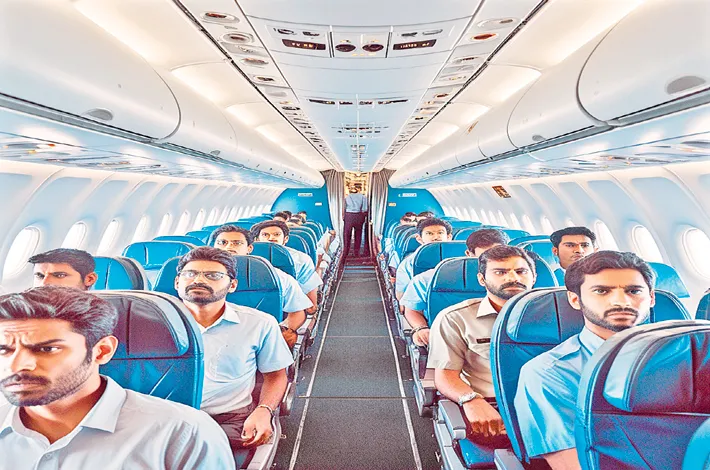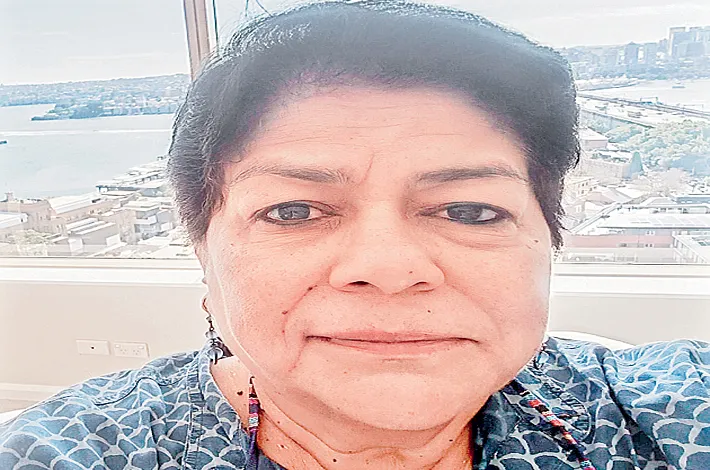The Vanishing Flight
16-07-2025 12:00:00 AM

The monsoon rain lashed Mumbai’s Chhatrapati Shivaji Maharaj International Airport, turning the tarmac into a glistening mirror of chaos. Air India Flight AI-492, bound for Delhi, sat at the gate, its fuselage trembling under the storm’s fury. Inside, 178 passengers fidgeted, their murmurs drowned by the roar of engines warming up. Captain Vikram Sethi, a 20-year veteran, ran through the pre-flight checks with his co-pilot, Arjun Mehra. The control tower crackled through their headsets, clearing them for takeoff despite the weather. Neither knew that in less than an hour, their Boeing 737 would vanish from the sky.
At 9:17 p.m., Flight AI-492 lifted off, clawing through the turbulent clouds. The cabin lights flickered as lightning illuminated the wings. In seat 23A, Priya Sharma, a journalist with a knack for unearthing corruption, clutched her laptop bag. She’d spent weeks chasing a lead on a smuggling ring tied to high-ranking officials. Her source, a nervous whistleblower, had slipped her a USB drive hours before boarding. “Don’t trust anyone,” he’d whispered. Priya’s pulse raced as she glanced at the man in 23C, his face half-hidden under a baseball cap, eyes fixed on her.
Thirty minutes into the flight, the plane hit a pocket of turbulence so violent that oxygen masks dropped. Passengers gasped, gripping armrests. Captain Sethi’s voice came over the intercom, calm but strained: “Ladies and gentlemen, please remain seated. We’re experiencing some rough weather.” In the cockpit, Arjun scanned the radar, frowning. “Vikram, this storm’s worse than forecast. And… wait, what’s that?” A faint signal blinked on the radar, too close for comfort. Before he could say more, the plane lurched violently, and the cockpit went dark.
On the ground, Mumbai’s air traffic control lost contact with AI-492 at 9:52 p.m. The transponder signal vanished. Radar showed nothing but static. Within minutes, the airport’s crisis room buzzed with activity. Senior controller Rakesh Gupta barked orders, his face pale. “Get me the last transmission! Scramble search and rescue!” Outside, the storm raged, grounding helicopters. The media caught wind, and by midnight, “Air India Crash” trended globally. Speculation swirled—mechanical failure, pilot error, or something darker.
In Delhi, CBI officer Anjali Rao was pulled from her bed by a phone call. Her boss, Director Mishra, didn’t mince words: “Flight AI-492 is down. Possible sabotage. You’re on this, Rao. Find out what happened before the vultures pick it apart.” Anjali, a sharp investigator with a reputation for cracking impossible cases, grabbed her badge and headed to the airport. Her gut told her this wasn’t an accident.
By dawn, search teams located wreckage in the dense forests of Maharashtra, 200 miles from Mumbai. The black box was missing, and the debris pattern suggested an explosion. Anjali arrived at the crash site, her boots sinking into the mud. Charred metal and personal belongings littered the ground. No survivors. Her team found fragments of a device that didn’t belong—a timer, possibly from a bomb. Anjali’s jaw tightened. “This was deliberate,” she muttered.
Back in Mumbai, Priya’s editor, Sameer Khan, received an anonymous email: The truth died with her. Stop digging. Sameer, a grizzled newsman, had seen threats before, but this one chilled him. Priya had been onto something big, something worth killing 178 people to bury. He contacted Anjali, sharing Priya’s last message: “Smuggling ring. Politicians involved. USB has proof.” The USB was gone, likely destroyed in the crash—or taken.
Anjali’s investigation zeroed in on the passenger list. Seat 23C, the man Priya had noticed, was listed as “Rahul Desai,” a name that led to a dead end—no address, no records. A ghost. Airport security footage showed him boarding with a small duffel bag, his face obscured. Anjali’s tech team enhanced the video, catching a glimpse of a tattoo on his wrist—a scorpion. “Run it through the database,” she ordered. The hit came fast: the tattoo matched a known enforcer for the D-Company, a syndicate with tentacles in smuggling and politics.
The plot thickened when Anjali interviewed the whistleblower, a jittery customs officer named Deepak Patel. He admitted leaking documents to Priya about a smuggling operation moving gold and drugs through Air India’s cargo holds. “They’re untouchable,” Deepak whispered. “Ministers, cops, even airline staff—they’re all in on it.” He refused to name names, terrified. Hours later, his body was found in a Mumbai slum, throat slit.
Anjali’s team traced the bomb fragments to a rare explosive used by military contractors. A tip led her to a warehouse in Navi Mumbai, owned by a shell company linked to a powerful MP. Inside, she found crates of contraband—and the missing black box. The flight data recorder revealed a chilling truth: the explosion originated in the cargo hold, triggered remotely. Someone on the ground had detonated it.
With pressure mounting, Anjali confronted the MP, Vikrant Thakur, in his opulent Delhi office. He denied everything, his smile smug. “You have no proof, Officer Rao.” But Anjali had one card left. The USB, recovered from the wreckage by a sharp-eyed villager, had survived. It held names, dates, and transactions implicating Thakur and half a dozen officials. As she played the audio of Thakur’s voice ordering the hit on Flight AI-492, his face drained of color.
The arrests came swiftly. Thakur and his network were charged with murder, smuggling, and terrorism. The nation reeled as the scandal exposed corruption at the highest levels. Anjali stood at the crash site one last time, the rain now a drizzle. The wreckage was gone, but the ghosts of AI-492 lingered. She thought of Priya, whose dogged pursuit of truth had brought down an empire. “You didn’t die in vain,” Anjali whispered, turning away as the sun broke through the clouds.








